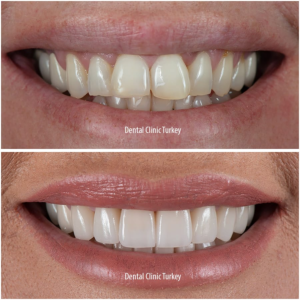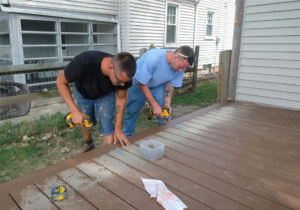Despite the technology boom, businesses face challenges in keeping their profit margins healthy. Automated parcel audit software addresses these issues and enables companies to harness shipping costs.

Services like Audintel identify mistakes by small parcel carriers on invoices including residential delivery surcharges for commercial establishments, avoidable address correction charges and dimensional weight errors and request refunds for shippers.
Shipping is a complex mix of rates, routes, and regulations, and just one error or extra charge can add up to a big bill for your business. Fortunately, you can save money and avoid overpaying by implementing a regular small parcel invoice audit. This is a critical step for any logistical team that wants to keep costs low and maintain a high level of service for customers.
While a small parcel audit can take some time, it’s a great way to spot errors in shipping invoices and get back refunds from your carrier. In addition, these audits can help you renegotiate your shipping contract and save more money over the long term.
A shipping invoice audit can identify overcharges and billing discrepancies that can cost your business thousands of dollars. These errors can include phantom accessorial fees, mislabeled packages, and inaccurate weight measurements. Addressing these issues can reduce your shipping expenses and improve the overall efficiency of your operations.
Moreover, these audits can ensure that your carriers are adhering to the terms of your agreement and are only charging you for the services they provide. In addition, these audits can also check for discounts that you may have overlooked, such as volume discounts.
Another benefit of a parcel invoice audit is that it can reduce the number of claims and disputes you file with your carrier. This will free up your staff’s time and resources, which can be used on more important tasks for the company. Besides, these audits can also help you build trust with your customers by showing them that you are attentive to the details of their shipping needs.
Previously, small parcel auditing was manual and resource-intensive, but now there are automated software solutions that can quickly detect errors in your shipping invoices. These software systems use a combination of algorithms and data science to detect errors, including dimensional weight charges, avoidable address corrections, and zone validations. Some providers even offer a monthly subscription that lets you recover refunds for invalid charges. This is a much cheaper option than hiring an in-house auditing team or paying an employee to audit shipping invoices manually.
Time-Saving
Small parcel audit is a cost-effective way to ensure that you are getting the best deal on your shipping. It can save your business time and money, while providing you with a more accurate picture of your shipping operations. It can also help you avoid extra charges, such as address correction surcharges or remote area fees. The service can be performed manually or with specialized software, which can improve accuracy and efficiency. It can also help you save on shipping costs by identifying errors in shipping invoices and claiming refunds from shipping carriers.
A large percentage of errors in shipping invoices are caused by incorrect accessorials, service level errors, and miscalculated rates. These errors can be costly for your company, so it is important to find them before they become a problem. Using small parcel auditing software is one of the fastest and most efficient ways to catch these errors. It scans each shipment’s invoice, flagging the most common mistakes. These errors can range from duplicate charges to incorrect dimensional weight charges and service-level adjustments.
It can also save your business a lot of time by providing you with a detailed breakdown of all the services your company is paying for. These reports can then be used to negotiate with your shipping carrier. This can be especially helpful in cases where there is a duopoly of providers, such as UPS and FedEx.
When you outsource your small parcel auditing, you can rest assured that the process will be taken care of by unbiased experts. This allows you to focus your time and attention on more pressing matters. This can be especially beneficial for companies that are experiencing a spike in shipments or dealing with seasonality.
Having an effective monitoring system is crucial for any shipping company. It can prevent lost shipments and ensure that customers receive their orders on time. Small parcel audits can save you a lot of time and money by catching shipping errors before they get out of control. By reducing these errors, you can save your company money and increase customer satisfaction.
Insightful
While many small business owners may think that implementing a parcel auditing process is just another task to check off their to-do list, this process has the potential to revolutionize your shipping operations. By ensuring that you only pay for what you receive from your carrier, parcel invoice audits can save your organization significant amounts in costs and help you stay competitive in the rapidly evolving business landscape.
Unfortunately, it is not uncommon for carrier invoices to contain errors. These errors can include duplicate charges, inaccuracies in rates, miscalculated accessorial fees, and even service level failures. Many of these mistakes are difficult to catch by hand. However, you can use automation technology to ensure that all your invoices are audited accurately and that any errors are identified and corrected immediately. This can save you a significant amount of time and money by eliminating the need to manually audit each invoice.
In addition to reducing your shipping expenses, parcel invoice audits can also provide valuable insights into your shipping operations. For example, a parcel audit can uncover duplicate charges that you haven’t billed for. It can also verify that the correct service levels are selected for each shipment, ensuring that you are not paying for more expensive services than necessary. This can help you identify opportunities to renegotiate shipping contracts and improve your bottom line.
Whether you are new to shipping or have an established company, it is crucial to implement a parcel auditing system. While this can seem like an overwhelming task, you can use automation software to streamline the process and save yourself time and money. In addition, outsourcing your auditing to a third-party can save you the cost of payroll for an in-house team.
While it is not uncommon for carriers to charge more than they should, the good news is that these companies are required to provide refunds for such mistakes. Small parcel audits can identify these refunds and ensure that your company is receiving the rates it has negotiated with carriers. This can significantly reduce your overall shipping costs and help you grow your business.
Efficient
While catching invoice errors may seem like a small detail in the grand logistics scheme, it’s an essential step for shippers to hit transportation spend management goals and maintain high-quality standards. These errors include late deliveries, voids (packages that were billed but not shipped), and duplicate charges (invoice billing done twice).
When businesses perform parcel auditing, they can identify these errors and communicate them to their carriers for refunds. They can also use this information to negotiate lower rates during carrier contract negotiations. These steps can save shippers millions in shipping expense and help them keep profit margins in tact.
Parcel auditing can also be used to identify opportunities for savings. These can be caused by human errors, misapplied shipping rates, or inaccurate volumetric weight entries. These errors can be spotted by examining shipping bills and invoices using parcel audit software. Unlike manually reviewing documents, these systems can identify multiple errors at once and offer solutions in an instant.
Besides being a cost-effective solution, parcel auditing can also boost productivity and help companies cut costs without sacrificing service quality. A comprehensive assessment of shipping data can uncover issues like mislabeled packages and inaccurate weight measurements, allowing businesses to correct them. It can also help them rethink their routing strategies and optimize shipping operations.
By performing a thorough review of shipping data, parcel audits can spot inconsistencies in pricing, discounts, and application of accessorial fees. This can lead to immediate savings and long-term cost efficiency. Moreover, it can also provide the groundwork needed to optimize future shipping operations and negotiate contract rates with carriers.
It’s important to note that not all parcel auditing services are created equal. In fact, a Zero Down client was able to recover over $300,000 by reopening claims that were rejected by their previous auditors. This was accomplished through Zero Down’s advanced logistics platform, FreightOptics.
While implementing a parcel auditing system can be intimidating, it’s worth the effort. It can save businesses a significant amount of money and improve their profitability by identifying inconsistencies in pricing, discounts, or application of accessorial fees. Using parcel auditing can also ensure that the carrier’s service guidelines and customer agreements are being honored.







